Refer first to:
The prevalence of confidentiality or secrecy agreements is perhaps one of the least discussed and most fundamental problems with our civil justice system. At various stages of a lawsuit, a plaintiff suing a large corporation for causing serious harm will gain access to compelling information. If the parties decide to settle, there is a chance that all of this information, including that which implicates the corporation’s role in broader public health and safety hazards, will be kept secret under a confidentiality agreement. In participating in a settlement, the plaintiff signs away his or her ability to share information gained about the harm being committed, the settlement amount, and other valuable details.
As a result of confidentiality settlement agreements, a defendant corporation that is conducting harmful business practices may freely continue engaging in the same practices after settlement, with no fear of public reprisal. As a result, more unsuspecting victims are injured by concealed hazards, and then are being forced to re-invent the wheel in asserting their claims against the perpetrators. This system can lead to astonishingly tragic outcomes. For example, the Firestone and Bridgestone tires that exploded on Ford Explorers, killing at least 88 people, were first made in 1993 but not recalled until the year 2000.(1) This is because the public had no access to the vital, life-saving information from prior lawsuits that was kept secret under confidentiality agreements prior plaintiffs had signed during settlement.(2)
Perhaps the most extreme example of this phenomenon is asbestos litigation: lawsuits against manufacturers for knowingly exposing their employees and others to toxic levels of asbestos, causing often fatal lung and respiratory diseases. The first asbestos case was brought and settled in 1933, compensating eleven clients to the tune of $30,000 ($450,000 in today’s dollars).(3) The settlement agreement required that the lawyer not be involved in any future cases, effectively closing off the evidence and expertise he had accumulated.(4) It took forty-five years for anyone to discover this secrecy agreement.
(5) Seventy-four years, hundreds of thousands of plaintiffs, and billions of dollars in paid damages later, asbestos litigation remains on the nation’s dockets. Had the details of the health risks of this first case been released to the public, many of these injuries and the litigation they required could have been avoided by implementing stricter and ultimately far less expensive safety standards on the asbestos industry and its service providers.
Many plaintiffs file lawsuits not just for individual compensation for their injuries, but also to prevent the wrongdoer from inflicting harm on future victims. But these plaintiffs face external pressure to settle their lawsuits under confidentiality agreements even when public safety and health are at stake. Although many of these plaintiffs do not wish to settle under such conditions, they often feel they have no other realistic choice. Public interest lawyer Arthur Bryant describes the dilemma:
[W]hat happens at the settlement, is the company often says: ‘We will pay you some large sum of money but only if the amount we’re paying you is confidential, you agree to return all those documents to us, and you agree not to tell anybody what you saw.’ And often the plaintiff will say, ‘Well I don’t want to agree to that,’ and the company will say, ‘Fine, then we will go back to court and keep fighting for years and years and you’ll never get a penny.’ Again many of the plaintiffs and their lawyers feel essentially blackmailed as if they have no choice, particularly when you’re representing somebody who is seriously injured and needs the money to pay their medical bills, they really don’t have any choice. And that’s the way it ends up being kept secret through settlement.(6)
Supporters of confidentiality agreements argue that the corporate defendant’s right to privacy and to contract should trump any larger public safety goals involved in a lawsuit.(7) The privacy interest behind confidentiality settlements is usually recognized when secret information—for instance trademark information—is at issue.(8) But the privacy argument is also often used to protect corporations not from having their valuable trade secrets exposed, but from the “harm” of public accountability for their wrongdoing. As much as privacy is valued, a corporation’s privacy regarding its misdeeds simply should not trump the general public’s right to be aware of serious public health and safety threats.
Even when the plaintiff agrees to secrecy, the judge has the authority to protect the public interest and deny a secrecy agreement, but experts have found that most judges do not.(9)
Corporations are supposed to show “for each particular document it seeks to protect… that specific prejudice or harm will result if no protective order is granted,” but often the pressure on judges of running a full docket means that secret settlements are “filed under seal as a matter of course.”(10)
Supporters of confidentiality complain that prohibiting these agreements will prevent many cases from being settled and thus “clog” the courts with full-blown trials.(11) It is this argument that some scholars say creates pressure for many plaintiffs, as well as pressure for plaintiffs’ lawyers and judges, to settle instead of fully adjudicate their claims.(12) But this argument is weak in comparison to the public’s health and safety interest in disclosure. As the asbestos example demonstrates, early public disclosure would save lives and prevent future lawsuits, as well as help businesses model their operations in a way that is beneficial to society, and ultimately, to the business’ reputation and profit margin. …
The Catholic Church, the oil and gas industry, Donald Trump, Silicon Valley, governments and corporations all share one thing in common — the use of non-disclosure agreements to hide the truth about wrongdoing.
In every case, the offenders offer compensation — to victims of sex abuse, environmental disasters, government corruption.
But only if they agree never to talk about what happened.
The church has used the legal technique to cover up the grotesque sexual abuse of thousands of children by priests for more than three decades.
The oil and gas industry has routinely used non-disclosure agreements (NDAs) over four decades to conceal the gassing of livestock, environmental poisoning and the contamination of groundwater.
The powerful now use non-disclosure agreements on a daily basis to abuse the powerless. NDAs have become the high-tech way to molest and bury the truth. …
According to the Columbia Journalism Review, contracts of silence have been used to cover up a lot of wrongdoing.
They played a role “in concealing, among other things, the dangers of silicone breast implants, the flaws in a kind of side-mounted gas tank used by GM, and toxic-waste leaks into rivers across America.”
But not much compares to their use by the Catholic Church.
It has employed NDAs as a major tool to cover up its scandalous abuse of power and the serial sexual molestation of thousands of children by priests and bishops around the world over several decades.
Thanks to non-disclosure agreements, the church kept the number of incidents and the cost of settlements secret. …
Ryan Philp, a U.S. legal scholar, has argued that the church’s abuse of contracts of silence must end.
“Courts must recognize their duty to scrutinize any agreement that would sacrifice safety in favor of secrecy… the non-disclosure agreements used in the Catholic Church settlements pose obvious dangers to public health and safety by depriving society of vital information.”
Amen.
A favoured tool for the oil and gas industry
But the Catholic Church is not alone. North America’s oil and gas industry has used NDAs just as religiously for decades.
In the daily business of drilling and fracking, the oil and gas industry makes many mistakes and some result in toxic spills, uncontrolled fractures, earthquakes, leaks from abandoned wells and ruptured pipelines.
As a result farmland is destroyed, water is contaminated and poisonous clouds of gases enter homes or harm livestock. The scale of the abuse is large and affects millions.
I know because I have reported on these incidents for nearly three decades in Alberta and British Columbia and I interviewed scores of abused landowners from Wyoming to Manitoba.
Take fracking for example. It is a highly disruptive technology as the industry injects huge quantities of water, chemicals and sand into the ground to crack rock formations and release hydrocarbons.
But industry can’t always control the direction of the fractures, and many connect to groundwater, the surface or other oil and gas wells.
A 1987 report by the U.S. Environmental Protection Agency documented one of the first cases of fracking resulting in groundwater contamination in West Virginia as early 1982.
Legal settlements sealed by non-disclosure agreements prevented regulators from compiling critical scientific evidence, the EPA said.
“This is typical practice, for instance, in Texas,” the 1987 report stated. “In some cases, the records of well-publicized damage incidents are almost entirely unavailable for review.”
Current and former EPA officials told the New York Times in 2011 they couldn’t assess how severe the problem of groundwater contamination by fracking was because of non-disclosure agreements.
“I still don’t understand why industry should be allowed to hide problems when public safety is at stake,” Carla Greathouse, the lead author of the 1987 EPA report told the Times. “If it’s so safe, let the public review all the cases.”
Greathouse and her colleague found “dozens” of cases that likely involved drinking water contamination related to fracking. But NDAs kept the legal settlements sealed and beyond their reach. Since then regulators and landowners have documented nearly 1,000 cases of groundwater contamination from fracking or leaking wells.
In 2013 Glenn Solomon, a Calgary lawyer, explained how the system of legal settlements and non-disclosures agreements worked in Canada during a recorded conversation with Brent O’Neil, a citizen seeking legal advice for his land-owning mother.
Solomon told O’Neil that most litigation cases involving landowners were resolved with non-disclosure agreements and a payout.
“OK, we damaged your water well. We’ll just set you up with potable water through a tank system forever, because, you know, we just spent a million dollars drilling this well that we made a $100 million on. And it’s costing us an extra $300,000. We’re OK.”
Solomon set out the industry’s attitude, which matches that of the Catholic Church: “‘You know, we don’t need to litigate with you, we don’t even need to know that it was our fault. We’re just happy to pay you. And by the way, by doing that you shut up, the regulators stay off your back, we get to do it again down the street.’ And so that’s the oil company approach.”
An Alberta mother responded to Solomon’s reasoning in The Tyee with this pointed comment. “What are we teaching our kids by signing away their right to freedom of speech? Contaminated water is a public health issue. Water moves, even contaminated water. Gag orders should be illegal.”
In Pennsylvania, politicians and landowners are proposing to amend the state’s Oil and Gas Act to force companies to disclose “the number of non-disclosure agreements the well operator has signed with individuals who have claimed that the operations have harmed their health or contaminated their drinking water or otherwise damaged their property.”
No one really knows how many landowners in North America have signed non-disclosure agreement or, as one Pennsylvania investigation put it, “have traded their freedom of speech over contaminated water.”
But that’s the point. Non-disclosure agreements hide the truth and bury the evidence about the numerous impacts of shale gas drilling or tight oil fracking on rural communities.
The legal technique has made a very dirty industry appear clean, the same way it has tried to scrub a guilty church into some illusion of innocence.
In his review on how the U.S. government and its National Security regime has used non-disclosure agreements, Mark Ames asks some pointed questions that should be heard by every North American politician.
“By their very nature, nondisclosures restrict our liberties, our humanity — why accept them as an unfortunate but unavoidable fact of life? Why is your [the government’s] first instinct to justify or rationalize nondisclosures as necessary? Why is it your job to protect business investments and foster entrepreneurship? Why isn’t your first knee-jerk reaction outrage that our system prioritizes the power of contracts over our individual rights spelled out in the Constitution?”
But the ultimate question for lawyers, judges, the church, industry and government is this.
Why is it all right for powerful institutions and corporations to rely on a legal technique to hide evidence, enshrine lies and banish the truth in our already tarnished democracy?

Listen to AER’s outside counsel, Glenn Solomon, giving his take the water tank system forever and “shut up” advice that helps the oil industry keep polluting drinking water again and again “down the street.”
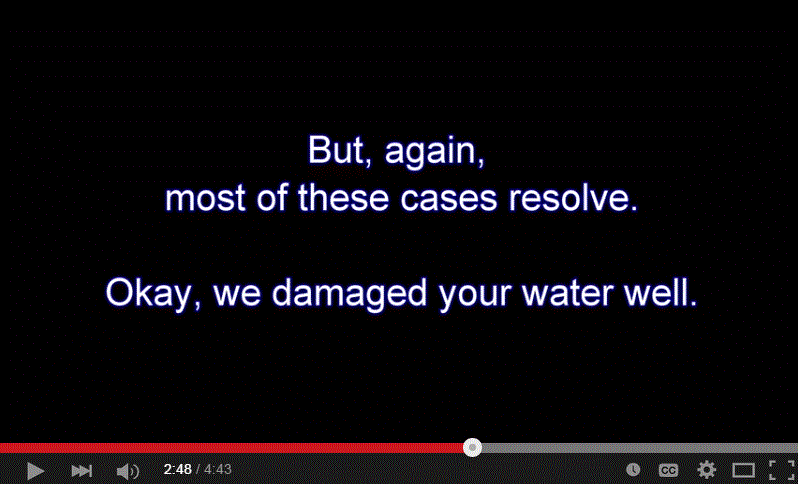
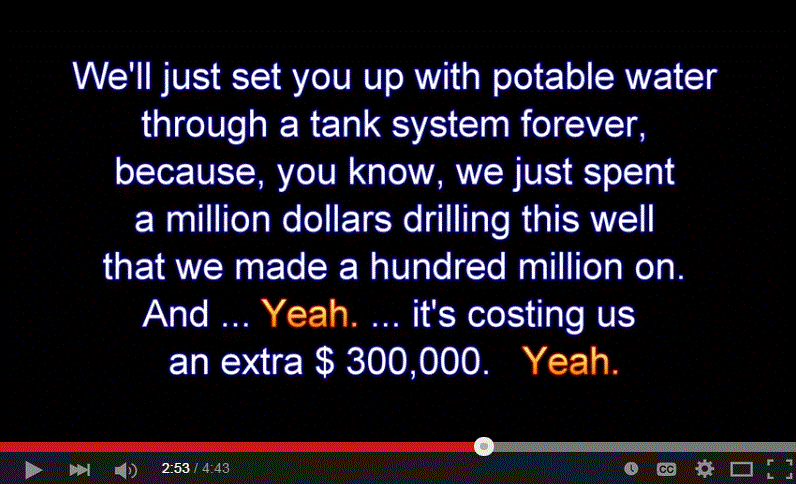
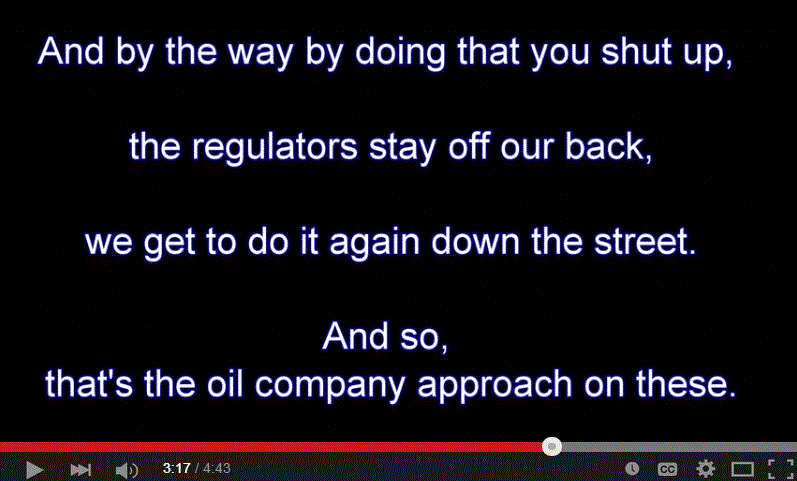
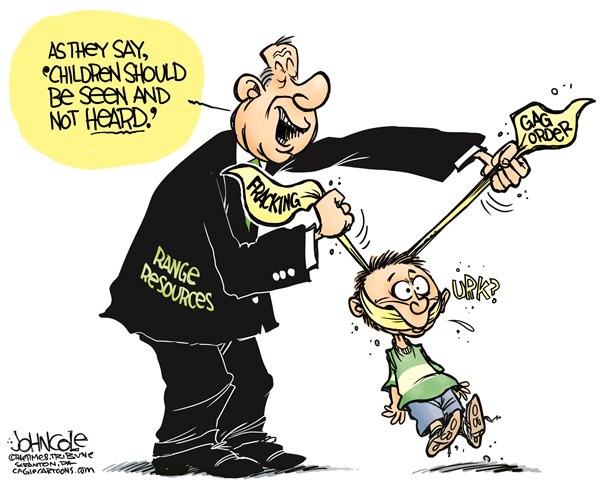
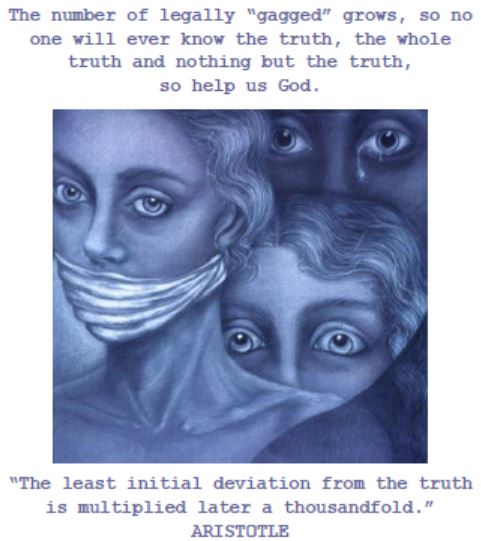
Addicted to Gag
Family reaches settlement in lawsuit over boy who choked on school lanyard by Kevin Martin, August 15, 2019, Calgary Herald
The family of a Calgary-area boy who suffered catastrophic injuries in a school incident in which he was nearly hanged on a lanyard has reached an out-of-court settlement with the Rocky View School District.
But because of a confidentiality agreement between the parties, the amount to be paid for the ongoing care of Nicholas Kitzul and the damages caused to him will remain a secret.
Justice Alice Woolley, who approved the settlement deal on July 30, denied a bid Thursday by several news organizations, including Postmedia, to divulge the amount.
Media lawyer Matthew Woodley had argued that because provincial legislation says any settlements involving minors must get court approval, the amount should be made public.
But Woolley found the legal principal of settlement privilege outweighed the general rule that court proceedings are open to the public.
The Court of Queen’s Bench judge said making the amount public could have a negative effect on future lawsuits involving minors.
Woolley said that the ability to utilize confidentiality agreements in settlement talks, something she said was a major incentive for parties to reach a deal, would be lost in such cases.
In legal disputes between adults, confidentiality agreements are common, meaning any out-of-court settlement is only known by the parties involved.
A provision of the provincial Minors’ Property Act requires that any deals between parties in lawsuits involving underage plaintiffs must receive court approval before a settlement can be finalized.
Woodley argued if the intent of the legislation was to allow the figures to be kept secret, the law could have been drafted in a way that approval could simply be made by the Public Trustee.
That step was required in this case, but court approval was also necessary, bringing it into a public forum, the lawyer said.
In 2014, Nicholas’ parents, Kamila and Grant Kitzul, filed a lawsuit seeking more than $17 million in damages for the injuries suffered by their son in a Dec. 12, 2012, incident at Bearspaw School.
The then-Grade 3 student was wearing a lanyard around his neck issued to carry his hall pass while on a bathroom break.
Four minutes after Nicholas left class, a schoolmate entered the washroom and found him hanging from the lanyard, which was caught on a washroom stall door.
Woolley said without the ability to enter into confidentiality agreements, minor litigants would be dealing with different rules.
”It is the only way to ensure that we have a system for minors, as well as adults, that encourages settlement discussions,” she said.
Lawyer Tara Pipella, who represents the Kitzul family, said they are relieved the case has been settled in what she described as a “horrific hardship.”
“It gives them the opportunity to move forward, finally, and secure the funding that Nicholas needs,” Pipella said.
She says while Nicholas still requires round-the-clock care, he has made some progress in recovering from his devastating injuries.
“The progress is very slow, but the family are so devoted to him I wouldn’t be surprised if he’s walking some day.”
Parents of Bearspaw student strangled by lanyard settle lawsuit but dollar amount remains secret, Nicholas Kitzul, 8, suffered severe brain injury after he was found hanging from a lanyard at school by Meghan Grant, Aug 15, 2019, CBC News
… The money will go toward things like rehab equipment, mobility devices and his in-home care, taking some of the pressure off his parents who are “exhausted,” said Pipella.
“If you have the opportunity to meet Nicholas, he’s a beautiful soul. He’s riding with a modified bike, he’s swimming in a pool.”
In a Calgary court on Thursday, CBC News and other media outlets including CTV, Global, Postmedia and Chorus opposed a partial sealing order that prevents the publication of the settlement amount
But Court of Queen’s Bench Justice Alice Woolley said in this case, settlement privilege — which prevents the disclosure of settlement figures — trumps the open courts principle.
“It is only way to ensure we have a system … that encourages settlement discussion and the avoidance of litigation,” said Woolley in delivering her decision. [To protect Canada’s abusive legal system? To protect law-violating polluting corporations, and rapists, pedophiles and other abusers and keep their harms secret so that the abuse can continue unhindered?]
… Parents Kamila and Grant Kitzul sued the school and other related parties for more than $17 million in 2014. The defendants included the Rocky View Schools Division, the Alberta Teachers’ Association, the company that donated the non-breakaway lanyards and two school employees.
This past December, the Kitzuls reached a settlement agreement with the school board, meaning their three-week 2020 trial could be adjourned.
Media outlets argued against a partial sealing order, saying the public had a right to scrutinize the settlement.
“The absence of that information will only encourage scepticism and suspicion,” said Matthew Woodley, who represents the media consortium.
But lawyers for the family and the school board said it was necessary to protect the family’s privacy.
“Confidentially was an essential term of the settlement,” said Pipella.
Woolley agreed, finding people would be discouraged from settling if dollars amounts were made public
“One of the biggest advantages to settling outside court is that it’s private,” said the judge. [Or, that cases are kept out of court, silenced, and the wrong-doing kept secret?]
Family reaches settlement after Bearspaw boy choked by school lanyard by Tracy Nagai with files from Phil Heidenreich, Aug 15, 2019, Global News
A Calgary-area family has reached a settlement with the Rocky View School Division more than seven years after their son suffered life-altering injuries when he was choked by a school lanyard.
In December 2012, Nicholas Kitzul was found unconscious in a Bearspaw School bathroom when the lanyard around his neck became tangled in the bathroom stall door.
He spent four months recovering in hospital before he was allowed to return home.
“He requires care on a 24-hour basis and needs two caretakers,” the Kitzul family’s lawyer, Tara Pipella, said on Thursday. “He needs wheelchairs and specialized equipment so he can ride a bike.
“His family is proactive in giving him the best possible care they can.”
The Kitzul family was seeking more than $17 million in damages, however, the exact amount of the settlement will not be made public due to a confidentiality clause.
The lawsuit named Nicholas’ Grade 3 teacher, the principal of Bearspaw School, Rocky View School Division, the Alberta Teachers’ Association and Morgex Insurance.
Among dozens of allegations that were made, the most serious was that the school failed to supply breakaway lanyards which release under tension.
On Thursday, Global News was among other media outlets arguing the settlement amount should be made public because the lawsuit involved a public school district. However, the judge disagreed.
“Our clients will now be able to move forward with their lives and secure the funding that they need,” Pipella said.
Refer also to:
Oil company Anadarko’s quick secret settlement with families in Firestone Colorado home explosion that killed two, injured two and damaged a neighbouring home

Slide above from Ernst presentation, Cochrane, Alberta, 2011
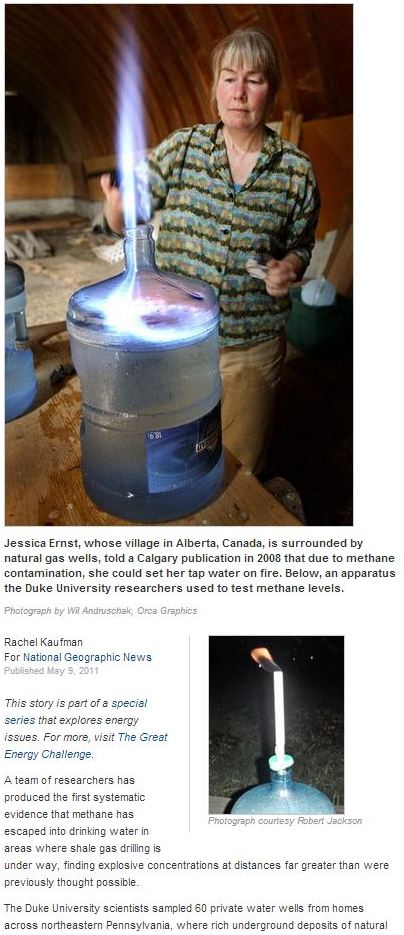
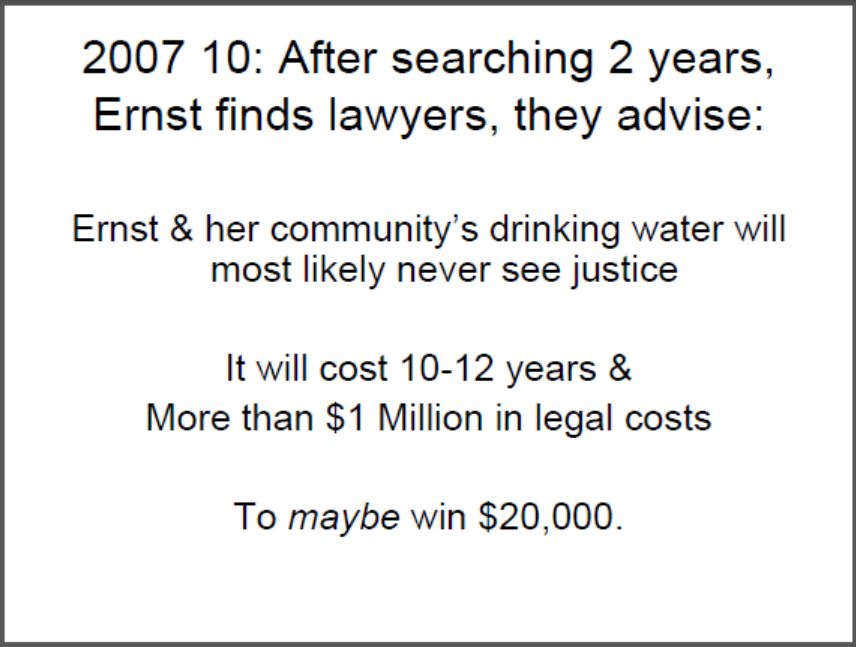
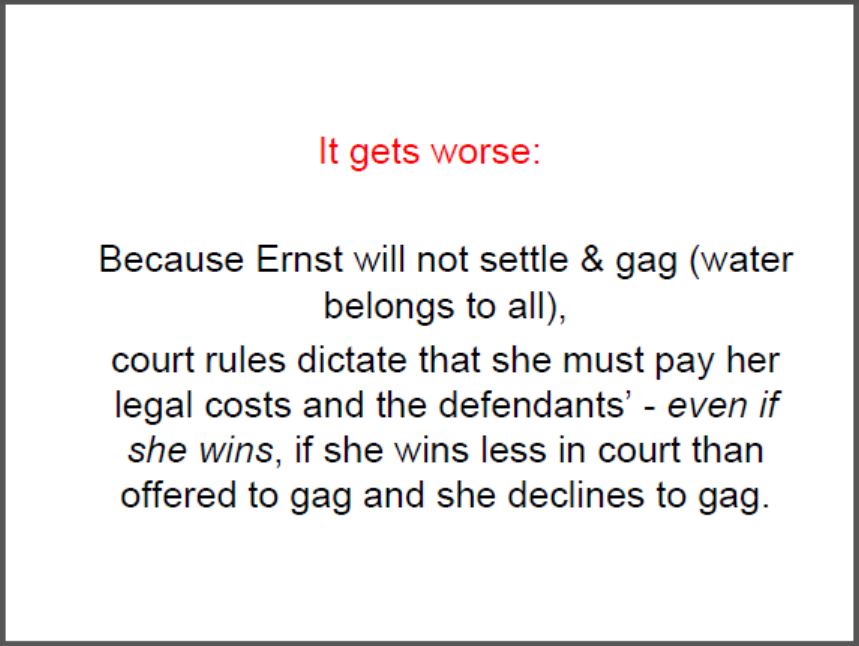
Brutal betrayals, Greed & Gag Orders, Losing Health & Home
2011: Australian Petroleum Association: Coal seam damage to water inevitable by The Sydney Morning Herald
The coal seam gas industry has conceded that extraction will inevitably contaminate aquifers. “Drilling will, to varying degrees, impact on adjoining aquifers,” said the spokesman, Ross Dunn. “The intent of saying that is to make it clear that we have never shied away from the fact that there will be impacts on aquifers,” Mr Dunn said.
Like Alberta gov’t and courts making Albertans second class citizens compared to other Canadians, legally immunizing AER’s law violations, gross negligence, acts in Bad Faith, even Charter violations? “Proving that certain behavior is ‘legal’ does not prove that it is ethical or just. That’s because corrupted political systems, by definition, often protect and legalize exactly the behavior that is most unjust.”
2014: Canadian Association of Petroleum Producers: Coal bed methane operations contaminate water resources takes out full page ad in The Calgary Herald, August 28, 2014 , publicly admitting shallow frac’ing contaminated drinking water in Alberta:
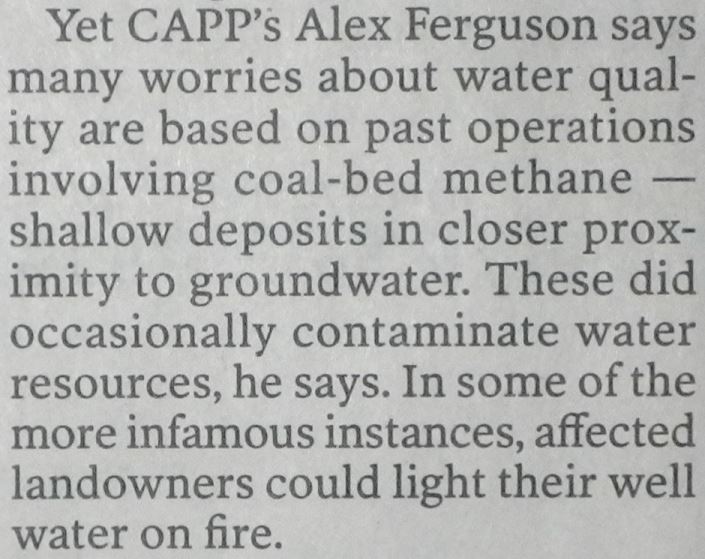
Alex Ferguson was appointed Commissioner and CEO of the BC Oil and Gas Commission (the regulator) from 2007-2011
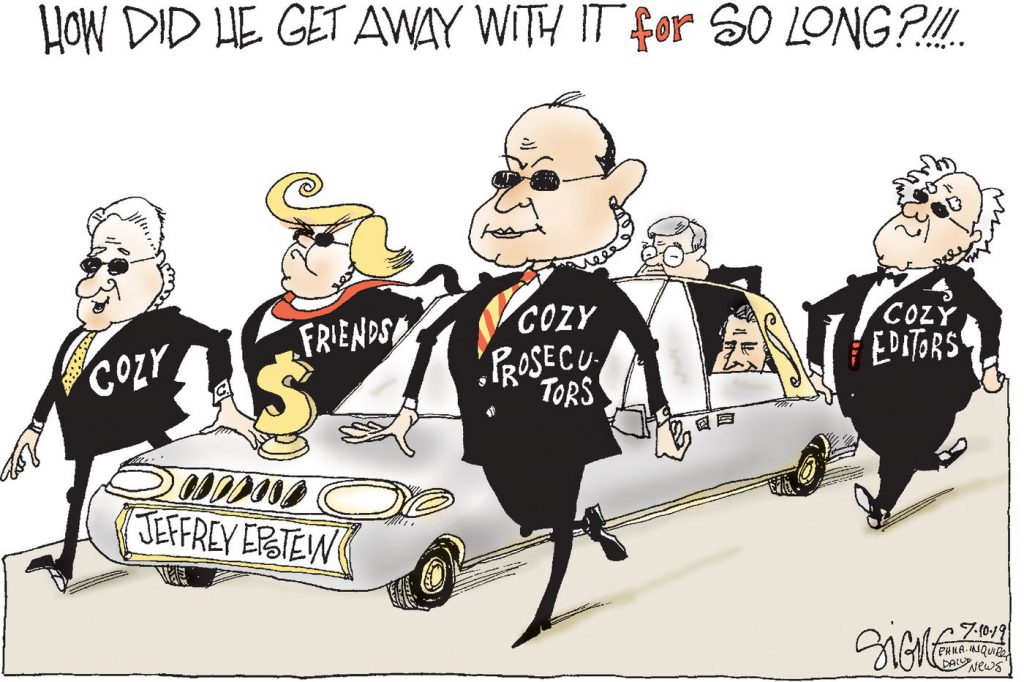
And how many cover-up, hide-the-abusive-truth cozy judges?
Or are the cozy judges under “cozy friends” category?
